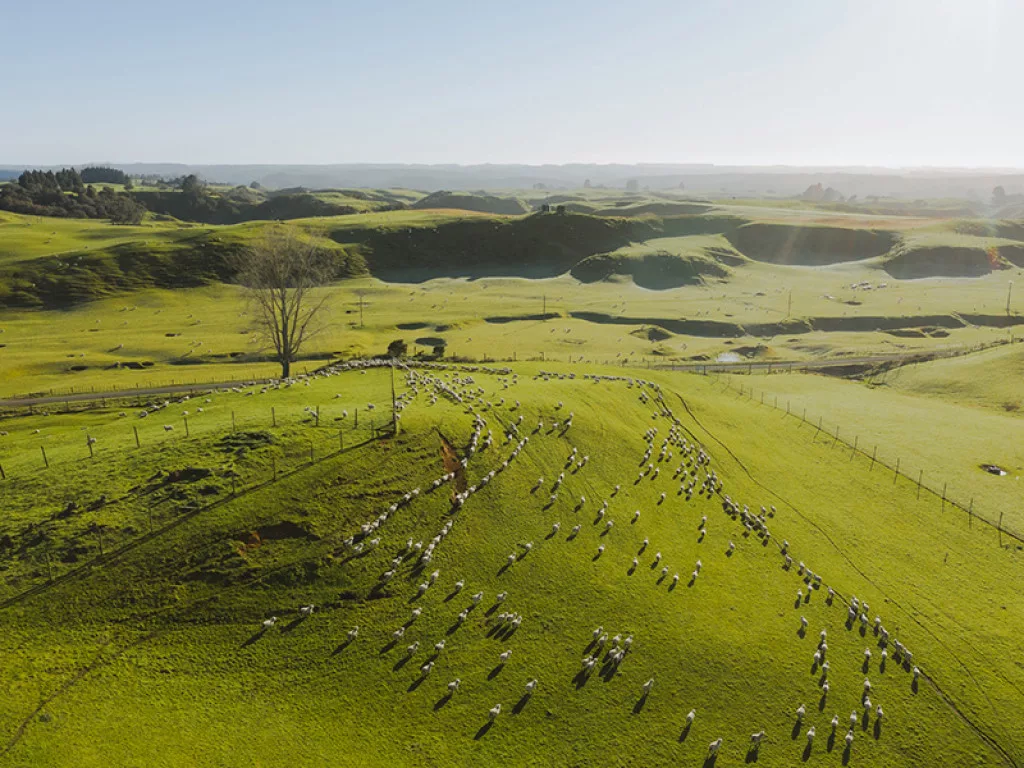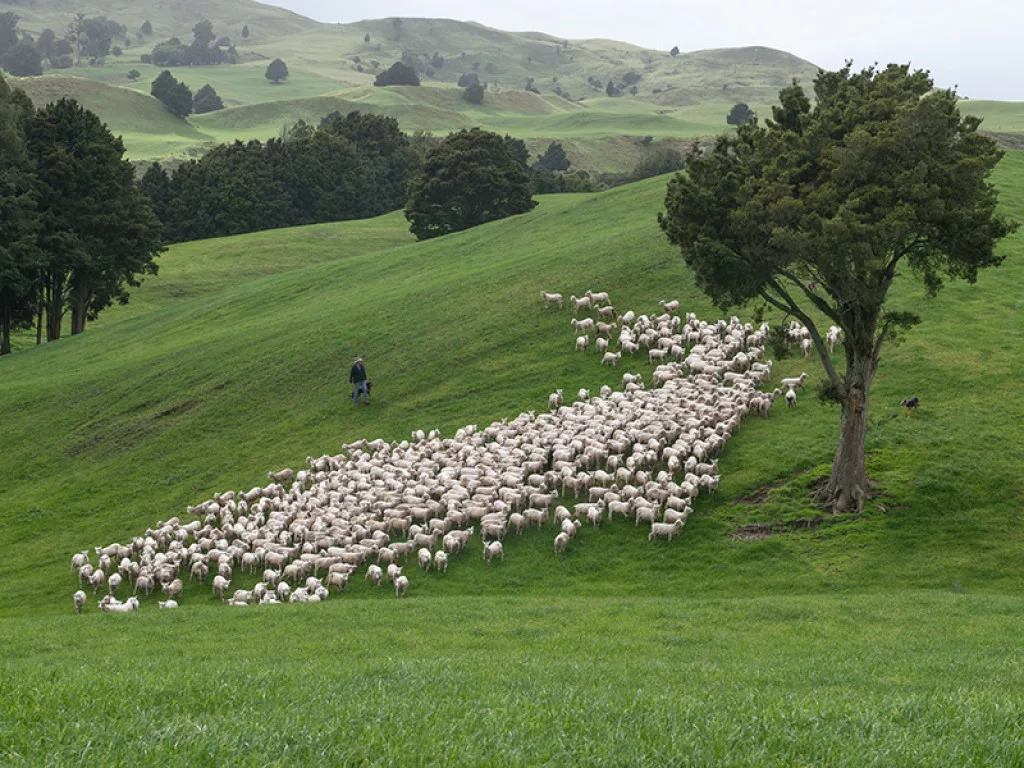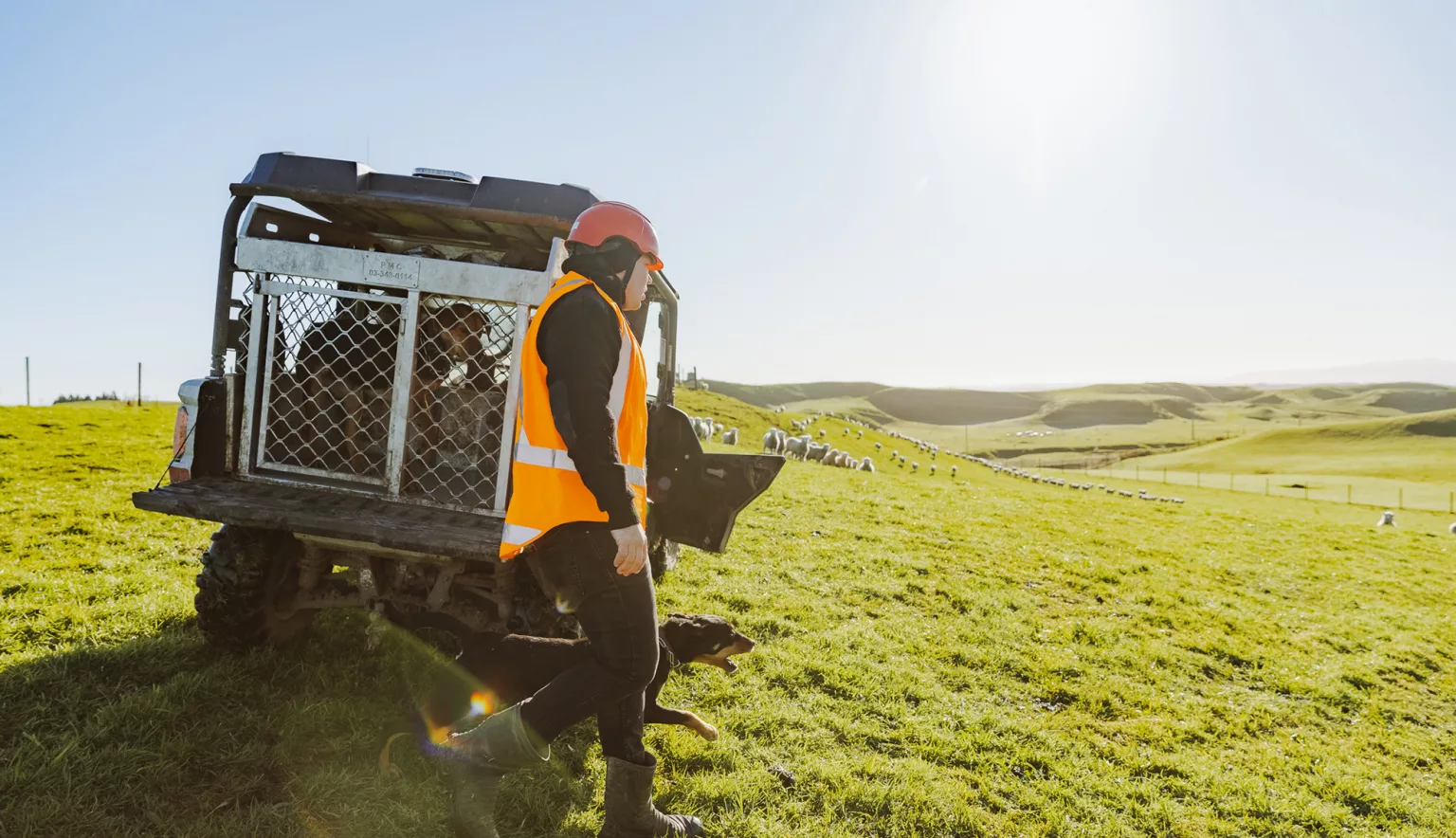New Zealand’s farmer, Pāmu Farms is an advocate for sustainable farming practices resulting in premium products. We explore the growing role of responsible forestry with General Manager of Forestry and Horticulture, Andrew Sliper.
GUARDIANS OF THE LAND
Pāmu: the word translates from Te Reo Māori, as ‘to farm’ – a meaning that both encapsulates the true purpose of Pāmu Farms whilst hearkening to the proud New Zealand (NZ) heritage of the land it cultivates.
As the island nation’s largest farmer and reputed as a world-class agricultural leader, Pāmu Farms (Pāmu) is the brand name of Landcorp Farming Limited – a state-owned enterprise of the NZ government.
With a footprint encompassing over 114 operations across both North and South Island, its nationwide portfolio extends to farms producing milk, beef, lamb, wool, venison, wood, horticulture, and more.
Across the board, Pāmu works hard to incorporate best practices in safe and sustainable farming that incorporate innovation as a means to deliver locally grown, nutrition-rich, natural products and fibre to markets across the globe.
Aside from the organisation’s traditional roots in dairy farming and red meat livestock, Pāmu’s forestry and horticulture division in recent years has flourished as an integral component of the business.
It is in this realm that Pāmu best demonstrates its commitments as a socially responsible, carbon-conscious entity that endeavours to incorporate responsible commercial forestry with the added benefit of carbon sequestration to offset the methane emissions of the farms. In a country where almost 50 percent of carbon emissions result from agriculture, the bulk of which is methane emissions, the significance of forestry cannot be underplayed.

AN HISTORIC LEGACY
Pāmu’s origins date back to the 1880s, rooted in the Department of Lands and Survey that was founded by the NZ Government.
“At that time, a lot of settlers were landing in NZ and pursuing an initial foray into agriculture,” says Pāmu’s General Manager of Horticulture and Forestry, Andrew Sliper.
“The department was responsible for establishing two-thirds of the farms across NZ, clearing a lot of land and developing it ready to sell to immigrants, settlers, or the soldier settlements assigned to those returning from the war to give them a future career.”
Almost a century later, in 1987 the country underwent a series of significant reforms, whereby government departments operating large-scale commercial enterprises became privatised under the State-Owned Enterprises Act 1986.
As such, the portion of the productive farmland assigned to the Department of Land and Surveys entered its new incarnation as Landcorp Farming Limited (later to assume the brand name of Pāmu) – formed essentially of the leftovers of land that hadn’t been allocated elsewhere by the Crown.
Pāmu also works closely with Te Arawhiti (the Office for Maori Crown Relations) in relation to managing or transferring land via the Treaty of Waitangi settlement process. “Some of our farms are destined to go back to iwi through Treaty Settlements and Pāmu works with iwi and the Crown to ensure there is a smooth transition of this land back into iwi ownership,” Sliper explains.
Aside from this, much like any economically viable private farming operation, Pāmu is tasked with ensuring that each farm thrives commercially and as a successful business.
“We are still 100 percent Crown-owned, and our primary role under the State-Owned Enterprises Act has been to deliver a commercial return,” he says.
SEIZING OPPORTUNITY
Whilst this purpose may be clear, Pāmu’s mission is complicated by the diverse topography of the NZ landscapes. Indeed, much of the operation’s portfolio consists of what Sliper refers to as “inferior lands”.
“If you think of NZ’s prime farmlands, we don’t operate in many of those traditional dairy farming areas, like Taranaki and Waikato.”
Instead, faced with steep, sloping lands prone to erosion, Pāmu has long been confronted with the question of how to maximise profit from such areas. It was this continued quandary that spawned the creation of the Forestry and Horticulture division, and Sliper’s own introduction to Pāmu.
Following a career centred on investment and financial services, based in private equity and funds management positions spanning Australia, London, and Hong Kong, Sliper entered the realm of agriculture rich with potential for private investors, before being approached by Pāmu. At the time, the forestry and horticulture division was in its infancy.
“My role and what it has become had its genesis only six years ago, as I began to look outside of our traditional businesses in livestock and dairy farming.
“The attraction behind forestry and horticulture was the commercial side, given my financial services background. The question of how we generate more income from this land use always appealed to me,” he muses.
Commercial forestry has proved a fruitful path for Pāmu to pursue in generating revenue from land that may be unsuitable for farming. However, the company doesn’t follow a blanketed approach, and is extremely strategic and selective in the allocation of lands assigned for planting.
As Sliper attests, “we take the steep hill country that isn’t making much money and is probably better suited to forestry. But we won’t plant on the flat land and other more productive areas.”
This is evident in Pāmu’s aversion to wholesale planting – an activity that might make solid commercial sense, particularly since the particularities of the NZ carbon market may reward such undertakings for improving carbon offsetting, but can be indicative of irresponsible land use.
“We have taken a view within our business that wholesale planting is inappropriate,” Sliper says.
Instead, commercial forestry fulfils a multi-faceted role for Pāmu that exceeds generating income from inferior parts of the land. It also entails planting native species, Pinus radiata – New Zealand’s most in-demand tree, destined for commercial use. Some areas may also be chosen for retiring, and able to revert back to those native species. Although Pinus radiata forms the core of Pāmu’s planting, it is also incorporating a diversity of trees into its forests including redwoods, eucalyptus, and native species.
“Forestry helps from an environmental perspective by securing erosion-prone land, and in reducing our greenhouse gas (GHG) emissions by sequestering carbon and offsetting the methane from the farms,” he explains.
In addition, the tree planting provides natural shelter for livestock, enhances biodiversity and improves the surrounding water quality. As such, Pāmu has an ambitious forestry agenda ahead, aiming to plant approximately 10,000 additional hectares of commercial forestry on the appropriate land over the coming six years.

“We’re making 100-year decisions…we need to be comfortable that once it’s converted into forestry that it is genuinely the best and highest land use”
Andrew Sliper, General Manager Forestry and Horticulture, Pāmu Farms
RESPONSIBLE STEWARDSHIP
The dichotomy of maintaining commercially successful farming and forestry operations whilst adhering to a commitment to the welfare of the environment and surrounding rural communities, is one that both Sliper and Pāmu are fully aware of.
This is embodied by the Māori concept of ‘kaitiakitanga’ – guardianship of the environment.
As a leader in sustainable farming practices, Pāmu works to conserve and protect its lands and adjoining waterways. Livestock largely roams freely, fed on a plant-based diet. These ingredients combine to create a premium product, but also a method of farming that is altogether more sustainable.
Within the lens of forestry itself, the question of social licensing is a factor in every decision made, as Sliper and his team strike a fine balance between commercial returns and an ethical, sustainable standpoint.
“We always return to the question of the social licence of forestry. This involves everything from aesthetics to permanent land-use change, to employment and the farming way of life. All these factors are discussed when we convert the land into forestry,” he tells us.
“We make sure that we’re making 100-year decisions, rather than 20-30 years. We need to be comfortable that once it’s converted into forestry, this is the best and highest land use.”
From a sustainability perspective, reforesting activities and retiring the land into native forest, allowing it to naturally regenerate, holds immense environmental benefit.
Meanwhile, horticulture activities carry a much lower GHG footprint compared to livestock farming.
The NZ Emissions Trading Scheme, as the country’s GHG platform that can be used to reduce emissions, endorses forestry as a positive contributor, which makes the carbon market favourable for Pāmu.
“The way the NZ carbon market works is it rewards forestry quite heavily by allocating carbon credits to those who are planting forestry. It’s sort of front-loaded, but once that sugar hit’s gone, you need to ensure that it makes sense over the long term.”

CULTIVATING THE FUTURE
Returning to the theme of seizing opportunity whilst working in symbiosis with the land and our changing climate, looking ahead, Pāmu’s horticulture segment is moving with transition.
“We will continue to expand our horticultural footprint with the planting of citrus fruit, avocados, and kiwifruit. Climate change produces a really interesting dynamic for NZ, as some of our areas in the far north will now be suitable for growing things like coffee and bananas. We can start modelling to adapt to that.”
Growing such superfoods in an environmentally conscious way is an endless source of reward for Sliper and the entire Pāmu team.
“It’s nice to be able to look my kids in the eye and myself in the mirror, and say that we’re producing something that’s good for the consumer and certainly has a lower impact on the planet.”
Meanwhile, Pāmu will continue to deliver on its mission, centred on transparency and an ethical obligation to the land and its people.
“We know there’s going to be continued pressure from a social licence perspective – whether that’s in health and safety, or animal welfare for instance. The end consumer demands more transparency for how their products are produced.
“This particularly applies to younger generations. There is an understanding that Gen Y wants traceability, but Gen Zs and millennials want proof. This demand for proof is a challenge that is going to be faced by any agricultural production system,” Sliper concludes.
Confronting this challenge head-on, Pāmu continues to stand as New Zealand’s farmer.





































